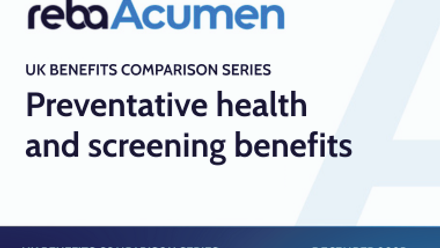Top tips for measuring the return on investment of your wellbeing benefits

To realise its full value, wellbeing requires a truly holistic approach that doesn’t just provide a benefit. A good wellbeing strategy should monitor, review and ensure a return on investment financially whilst extending the employee lifetime value too.
While we should support and measure the wellbeing of the individual, it is intrinsically linked with measuring and understanding the wellbeing of the organisation in its entirety.
How to measure the ROI of wellbeing
Chances are the HR system you use to administer your reward and benefits package, including wellbeing, comes with streams of usage data. The average HR team is sitting on a data gold mine which can be used to improve decisions, make employees happier and optimise processes.
This data can add value to a company because, in theory, you can discover what employees value and which wellbeing benefits are worth the investment. The challenge, however, is how to leverage that insight to enable effective, validated decision making.
Daily data
We are empowered by how technology enables us to access our own data. Think of activity trackers like Fitbit, where we can view and make informed decisions based on the data which is being reported back to us.
As an individual, we can use this data to improve aspects of our lives and potentially drive or change behaviour. For example, if we wanted to get fitter and increase our daily mileage, we could use our step count data to drive behaviours which would help reach the objective i.e. increase steps per day.
It should come as no surprise that the importance and versatility of personal data are continually being developed, both for commercial purposes and in organisations, particularly for HR and people functions.
Previously, HR decisions could be perceived to be based on gut feel and not on solid research and analytics. However, HR are now much more sophisticated in capturing and analysing data, which helps to continually adjust employee benefits to deliver maximum value and attract the best quality employees.
Here are three ways to measure how employees see your wellbeing benefits:
1. Demographics
By collecting data regarding the demographics of your organisation, you can determine a baseline breakdown of your organisation’s makeup. In turn, this will help you deliver the most relevant benefits to each group. For example, younger members of the workforce may value financial wellbeing benefits like a tech benefits scheme or affordable loans, whilst more mature staff members may be balancing work with taking care of their family, so appreciate flexible work benefits like holiday exchange.
2. Analytics
By using analytics to see what’s meaningful to employees either by measuring uptake of benefits via your employee experience portal’s management system or by using methods such as surveys, and tailoring your benefits offer to fit the needs of your workforce, you can ensure that relevance is at the forefront of the reward agenda. Remember the importance of getting employees’ views since the analytics won’t show you if something is missing, or tell you why a benefit isn’t being used.
3. Compare to averages
Keeping abreast of the trends both nationwide and in your sector will help give an indication as to how your offer stacks up next to the competition. Furthermore, by understanding what other businesses are doing, particularly businesses that are doing wellbeing right, you can find new ways to progress your strategy.
In summary, HR teams should look to develop their wellbeing offer using analytics to inform their approach. Being smarter about the kind of data we collect, and use will allow us to deliver best-in-class programmes that are constantly evolving based on the needs of employees.
Andrew Walker is the New Business Development Director at Personal Group
This article was provided by Personal Group
Supplied by REBA Associate Member, Personal Group
Personal Group provides the latest employee benefits and wellbeing products.







